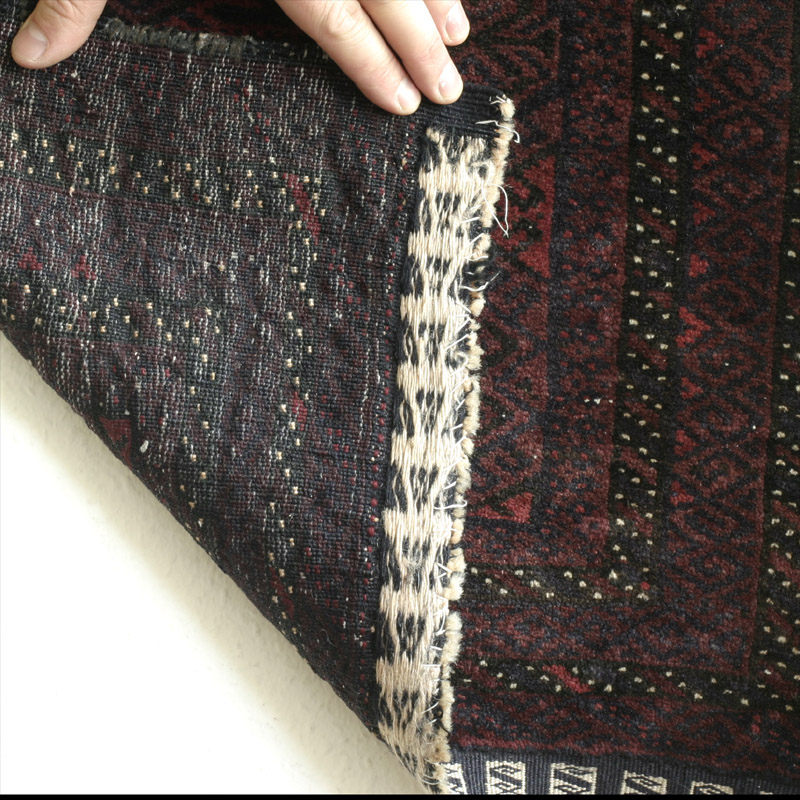Endless repeat with squashed lozenges sporting four arrows pointing inwards and creating a cross in negative space. The aubergine space between lozenges is filled by an endless meander pattern, which is also used in the wider pair of borders. Particularly attractive are the flatwoven ends with a ramshorn motive inscribed in a rectangle, executed in weft-float brocading. Whether this bag face evr had a back and was actually made as grain bag or as bag at all, I am not sure. It does not show the characteristic wear, it certainly has never been used in a tribal context. May be it was produced as a dowry item. Very suitable as narrow luxurious rug for a small space - the full velvety pile is very nice to the touch.
The balisht is quite large - it measures about 3ft.11in. x 1ft.8in. (120 x 52 cm). It is slightly narrower at the bottom, and slightly curved overall. The weave is extremely dense, the tension makes the foundation a bit wavy or ribbled (very small waves, a bit as if the wefts had contracted slightly after completion of the weaving, may be through washing?). Off-white wool warps, very thin light grey wool wefts, two shoots. the knotting is asymmetrical open to the left, quite fine: 8.h, 12.v = ca. 96 kpsi. The handle is meaty, substantial, flexible but with some springyness due to the the very tight weave. Both ends show the same band of weft float brocading in white and dark blue, a beautiful hooked motive (call it double ramshorn motive?).
Excellent condition, with full glossy and velvety pile in deeply saturated colours, practically no corrosion. The heap picture shows the shine of the wool which is so difficult to capture. There is slight loss to the band of weft-float brocading at the lower end, has benn stopped by white stiching, not done very competently, but easy to replace. One small moth bite, fingernail sized, two thirds down close to the left border.
No bleeding and tip fading, looks like all dyes apart from the ttiny white highlights (formerly a light orange-red) are natural, but I am not sure. The blue is slightly purplish, does not look like white wool dyed with indigo; either a light brown wool was dyed blue or indigo was overdyed with in a weak madder bath. The colour may just be a side product from the production of the aubergine which will have been made by overdying madder with indigo or vice versa. Alternatively, it is a very stable synthetic blue - but would such a blue not show tip fading? This blue doesn't .
The madder red plays into purple, like the tone that I remember can be derived from old madder roots with certain mordants. Again, I am not sure it is natural, may be it is a synthetic red, again one that is stable and shows no tip fading. Then there is the beautiful dark aubergine, a dark brown that seems to have gone through the indigo bath as well to darken it, and what appears as white, used sparingly as single-knot highlights in the border. Looking into the pile and at the back, this white is a light orange red, so I guess this is a synthetic dye that has faded to off white.




